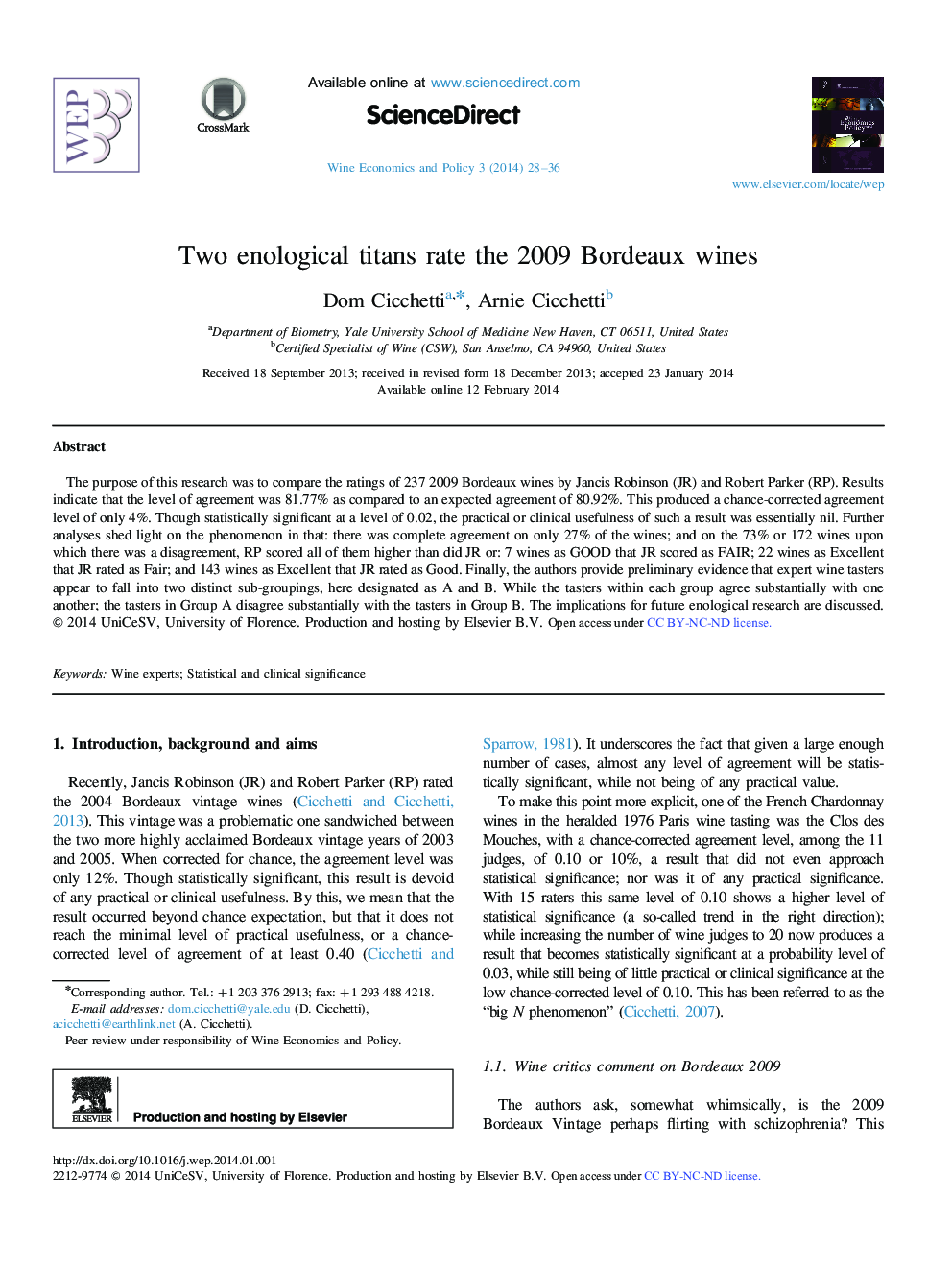| Article ID | Journal | Published Year | Pages | File Type |
|---|---|---|---|---|
| 1025391 | Wine Economics and Policy | 2014 | 9 Pages |
The purpose of this research was to compare the ratings of 237 2009 Bordeaux wines by Jancis Robinson (JR) and Robert Parker (RP). Results indicate that the level of agreement was 81.77% as compared to an expected agreement of 80.92%. This produced a chance-corrected agreement level of only 4%. Though statistically significant at a level of 0.02, the practical or clinical usefulness of such a result was essentially nil. Further analyses shed light on the phenomenon in that: there was complete agreement on only 27% of the wines; and on the 73% or 172 wines upon which there was a disagreement, RP scored all of them higher than did JR or: 7 wines as GOOD that JR scored as FAIR; 22 wines as Excellent that JR rated as Fair; and 143 wines as Excellent that JR rated as Good. Finally, the authors provide preliminary evidence that expert wine tasters appear to fall into two distinct sub-groupings, here designated as A and B. While the tasters within each group agree substantially with one another; the tasters in Group A disagree substantially with the tasters in Group B. The implications for future enological research are discussed.
